Design and Describe an Experiment Using Celery Stalks
As we studied closer we could see that the blue water was moving up the celery stalk through the xylem. Description Observation-a a testable hypothesis.
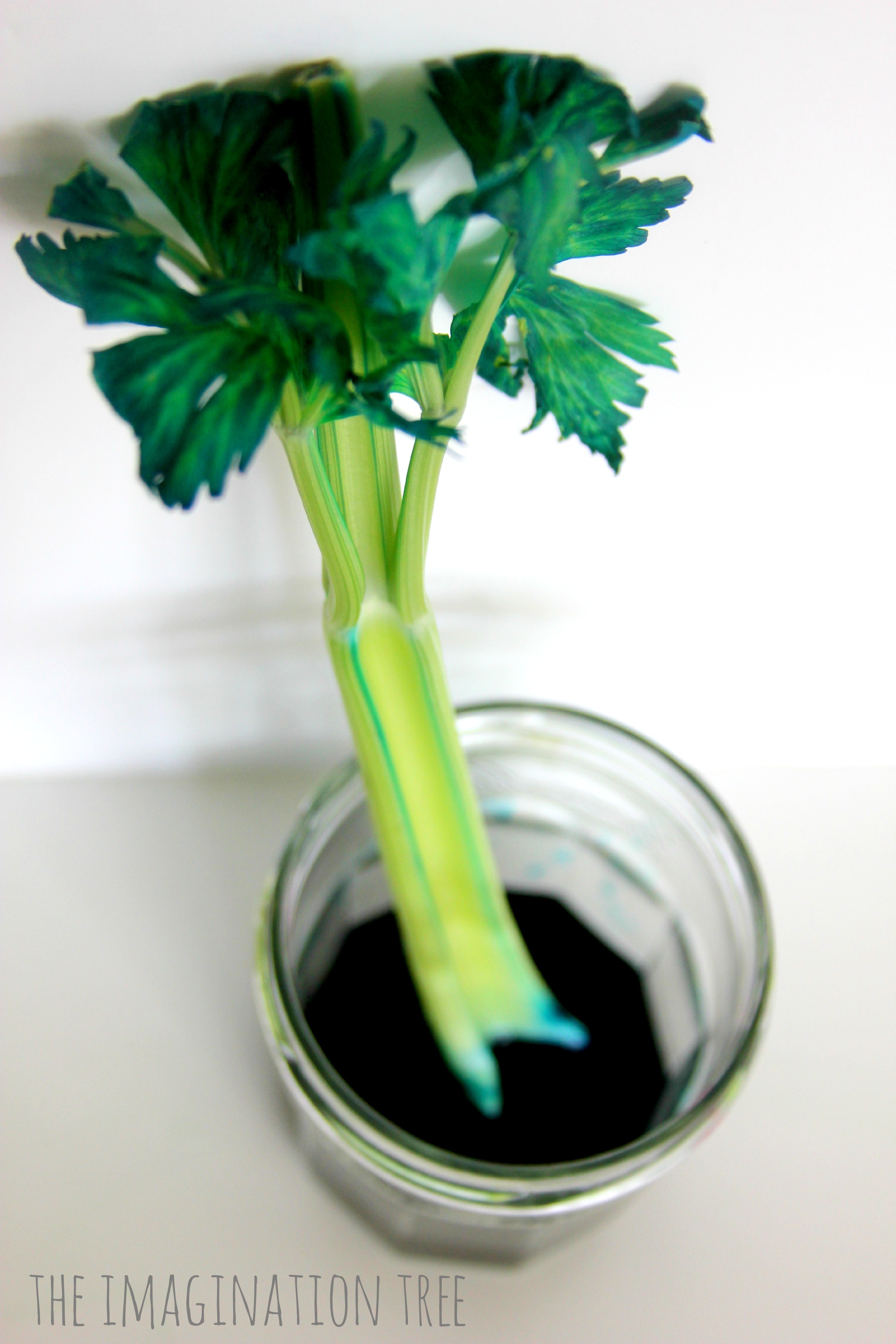
Dyed Celery Experiment Transpiration Demonstration The Imagination Tree
In order to follow the scientific method your description should start with an observation and be followed by i a testable hypothesis ii an outline of the experiment that.
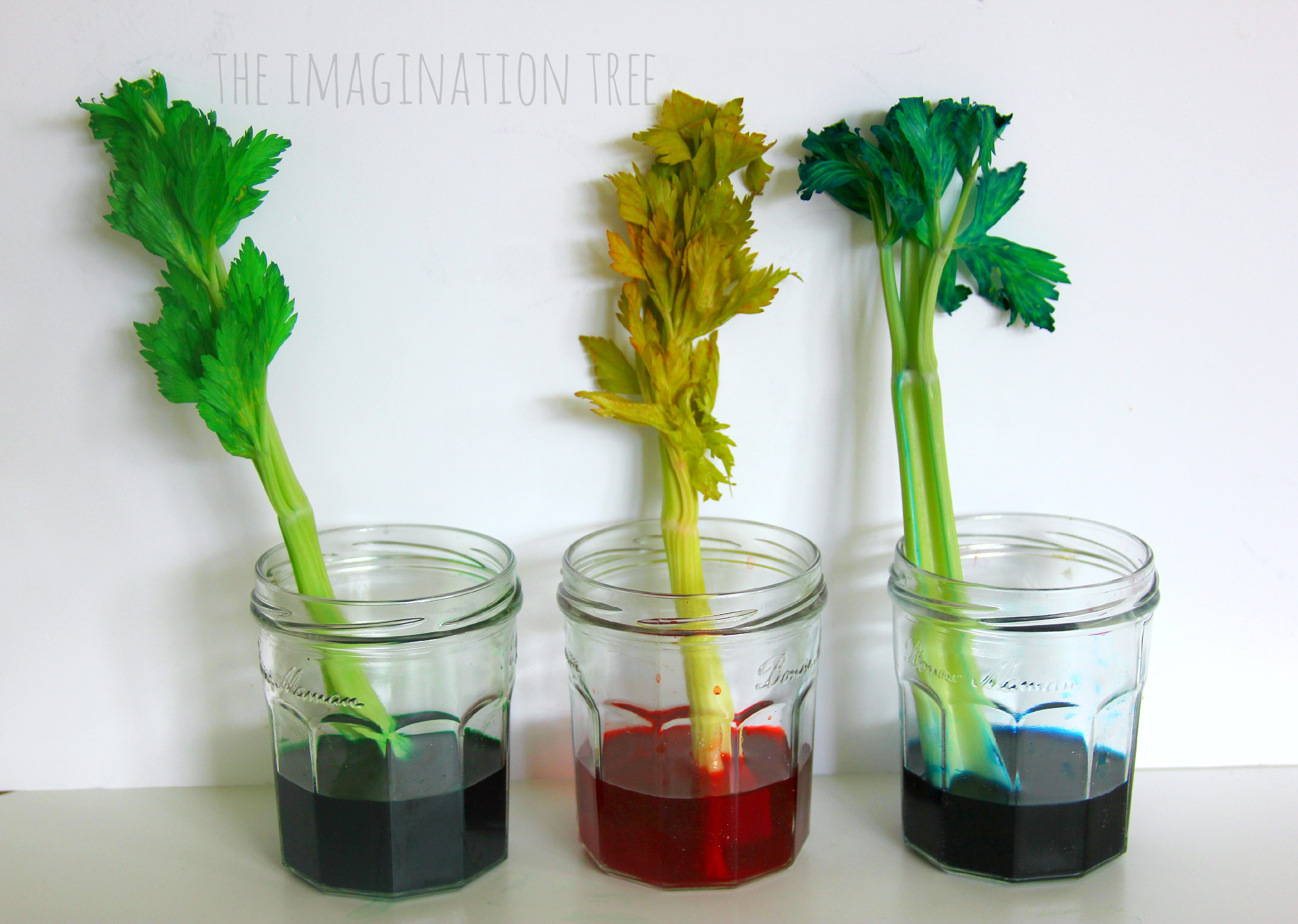
. The results were just as clear but maybe not quite as pretty. Correct answer to the question 3. C a description of the type of data that will be collected and.
We made red orange blue and black Then add the celery stalks. The celery stalk serves as a model for the generalized plant. Design and describe an experiment using celery stalks to demonstrate how certain conditions will cause a loss or gain of turgor pressure.
The lighter stalks near the center will show the most color. After the celery has had its drink youll notice that the leaves or the top end of the celery stalk if yours did not have leaves have begun to change color. In order to follow the scientific method your description should start with an observation and be followed by i a testable hypothesis ii an outline of the experiment that will test the hypothesis iii a.
Design and describe an experiment using celery stalks to demonstrate how certain conditions will cause a loss or gain of turgor pressure. Separate and select stalks of celery with leaves. In order to follow the scientific method your description should start with an observation and be followed by i a testable hypothesis ii an outline of the experiment that will test the.
In Part II of the activity they will explore how light influences the rate of movement of water in the vascular. B an outline of the experiment that will test the hypothesis. Place one celery stalk in each glass leafend at the top.
Start by filling four small jars about halfway full of water. Moving Fluids in Plants. Design and describe an experiment using celery stalks to demonstrate how certain conditions will cause a loss or gain of turgor pressure.
Students will explore the vascular tissue of a celery stalk. Celery Stalks Diffusion and Osmosis. Water moves through the cells.
In Part I of the activity students will use a dye to determine the location of the vascular tissues. Design and describe an experiment using celery stalks to demonstrate how certain conditions will cause a loss or gain of turgor pressure. Cut about an inch off of each stalk before placing in water.
When the celery stalk was placed in solution A. Design and describe an experiment using celery stalks to demonstrate how certain conditions will cause a loss or gain of turgor pressure. The stalk was firm and less flexible.
Wrap one square of the plastic wrap around the top of each glass and the celery stalk. Not only could we see colored water in the xylem but we could also see how the edges of the stalk were tinged with blue and purple. After 24 hours the leaves will have changed color to match the water.
The water moved through and in the cells of the celery which is an example of osmosis. Show the child the drinking straw and explain that the celery stalks. This is to prevent any colored water evaporating into the air directly from the glass.
Design and describe an experiment using celery stalks to demonstrate how certain conditions will cause a loss or gain of turgor pressure. Design and describe an experiment using celery stalks to demonstrate how certain conditions will cause a loss or gain of turgor pressure. Allow the celery to drink overnight at least 12 hours.
Science Biology QA Library Design and describe an experiment using celery stalks to demonstrate how certain conditions will cause a loss or gain of turgor pressure. Put about 8 ounces of water into glass jar or vase. This dyed celery experiment is a classic science demonstration that shows how plants use transpiration to suck up water.
Cut about a quarter inch off the bottom. The next morning we could easily see how the celery drank the colored water. More water moved into the celerys cells.
Drop 3-4 drops of food coloring into jar. Experiment-Using celery stalks to show that certain conditions will cause a loss or gain of turgor pressure. In order to follow the scientific method your description should start with an observation and be followed by i a testable hypothesis ii an outline of the experiment that will test the hypothesis iii a description of.
Fill the bottom of the plastic box with roughly one inch of room-temperature water. Introduction to diffusion and osmosis. Add food coloring to each glass of water.
Place the celery stalk in the colored water leaf end up. We really enjoyed this white carnation experiment a couple of years back and decided to repeat the same idea this time using celery for comparison. Place stalks into the water and using stalk stir very gently until food coloring is dispersed evenly.
Underneath each cell you drew above label whether the plant that cell represents was placed in a hypertonic hypotonic or isotonic solution. In order to follow the scientific method your description should start with an observation and be followed by i a testable hypothesis ii an outline of the experiment that will test the hypothesis iii a. Design and describe an experiment using celery stalks to demonstrate how certain conditions will cause a loss or gain of turgor pressure.
We left our celery science experiment overnight to develop. In order to follow the scientific method your description should start with an observation and be. Turgid - hypotonic Flaccid - isotonic Plasmolyzed - hypertonic.

Craftiments Two Color Celery Experiment
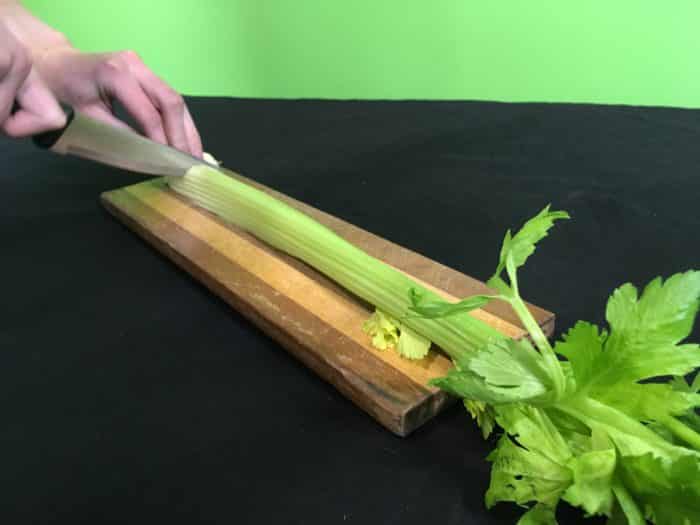
Celery Transpiration Fizzics Education
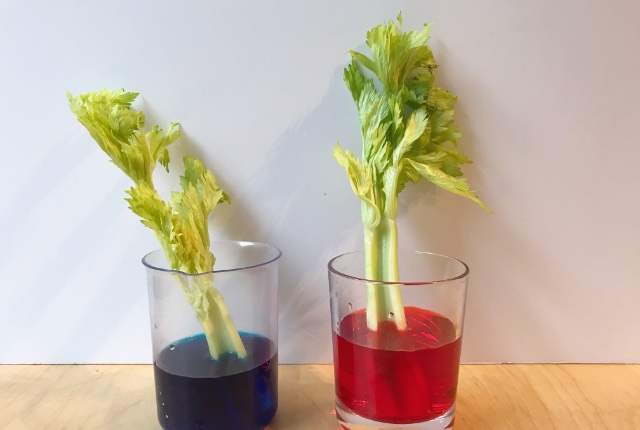
Celery Science Experiment The Bear The Fox
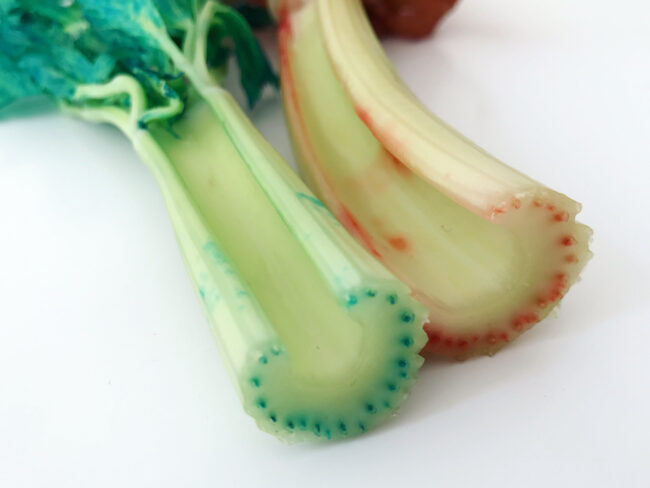
Celery Science Experiment The Bear The Fox

Celery Lab Phloem Xylem Biocircuits Outreach

Dyed Celery Experiment Transpiration Demonstration The Imagination Tree
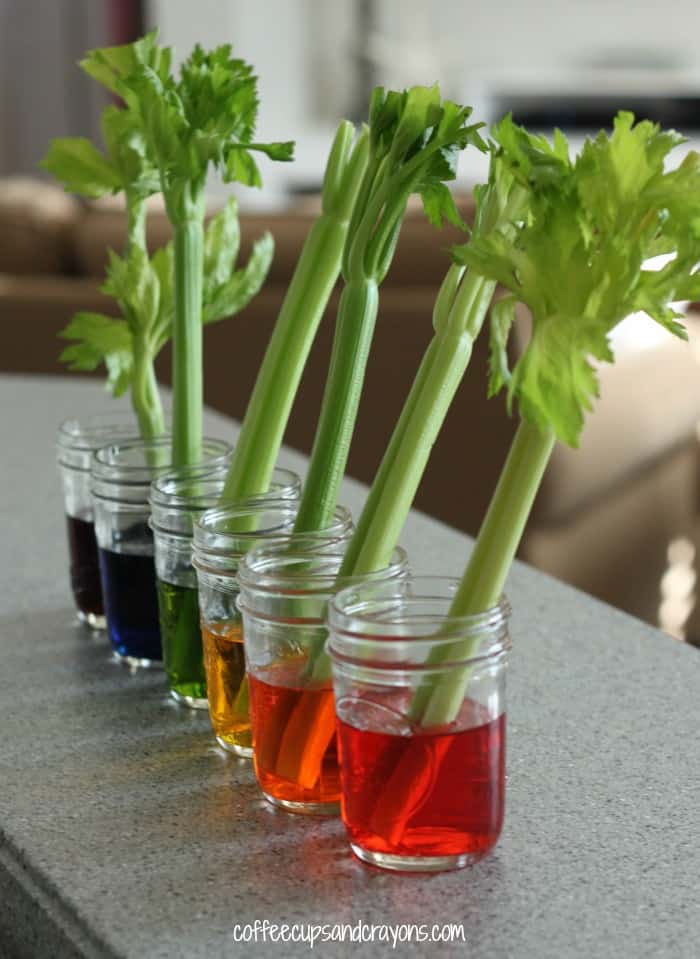
Celery Science Experiment For Kids Coffee Cups And Crayons

Craftiments Two Color Celery Experiment
How Celery Can Demonstrates Capillary Action

Water Transport In Plants Science Project Education Com Plants Science Project Plant Science Fair Projects Science Fair Projects

Dyed Celery Experiment Transpiration Demonstration The Imagination Tree

Craftiments Two Color Celery Experiment

Grow Your Own Celery Small Bowls Celery Grow Your Own

Celery Food Coloring Experiment Little Bins For Little Hands

Craftiments Two Color Celery Experiment
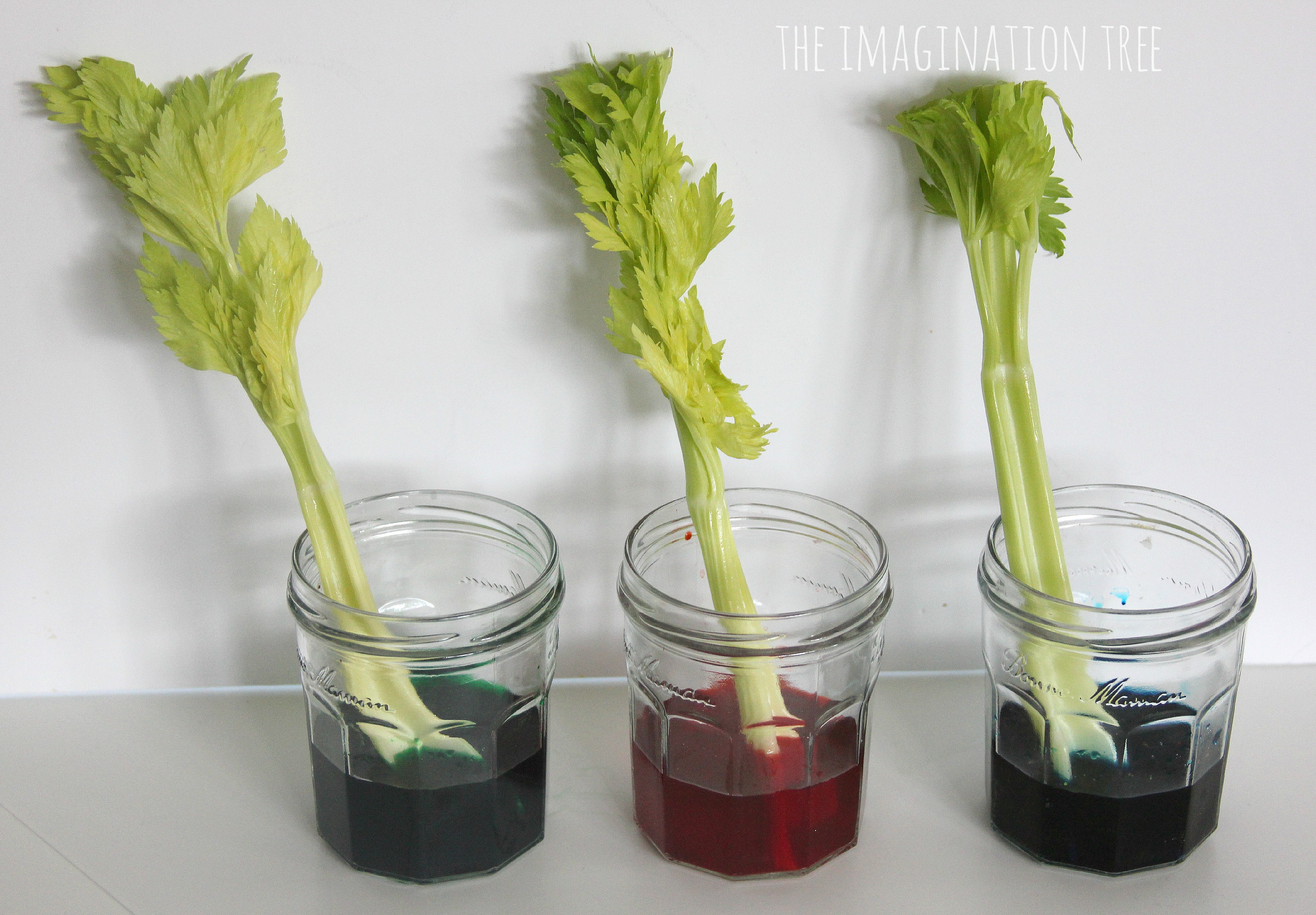
Dyed Celery Experiment Transpiration Demonstration The Imagination Tree
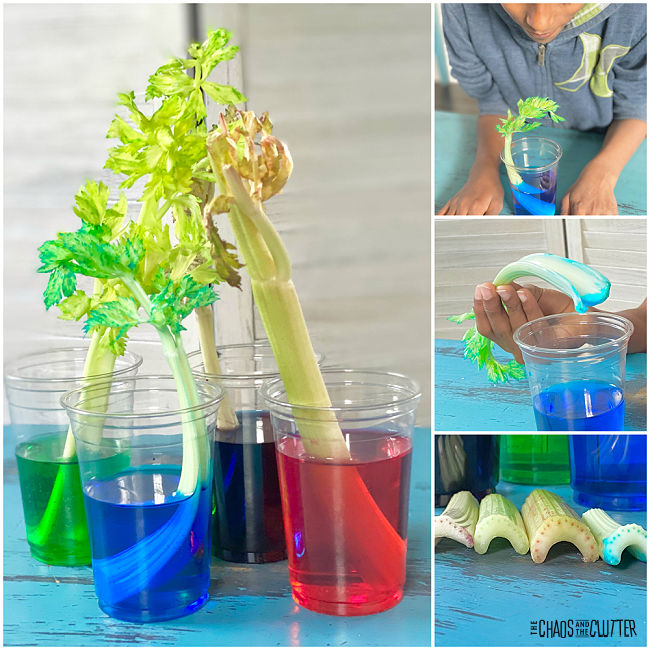
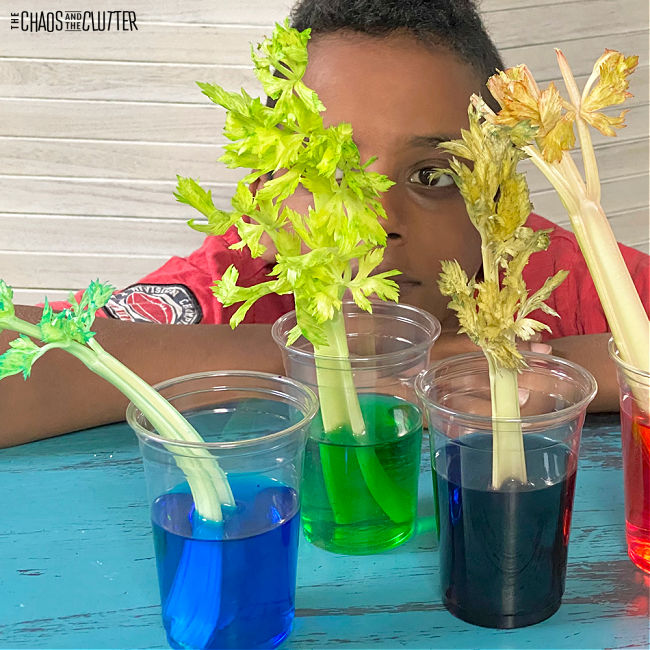

Comments
Post a Comment